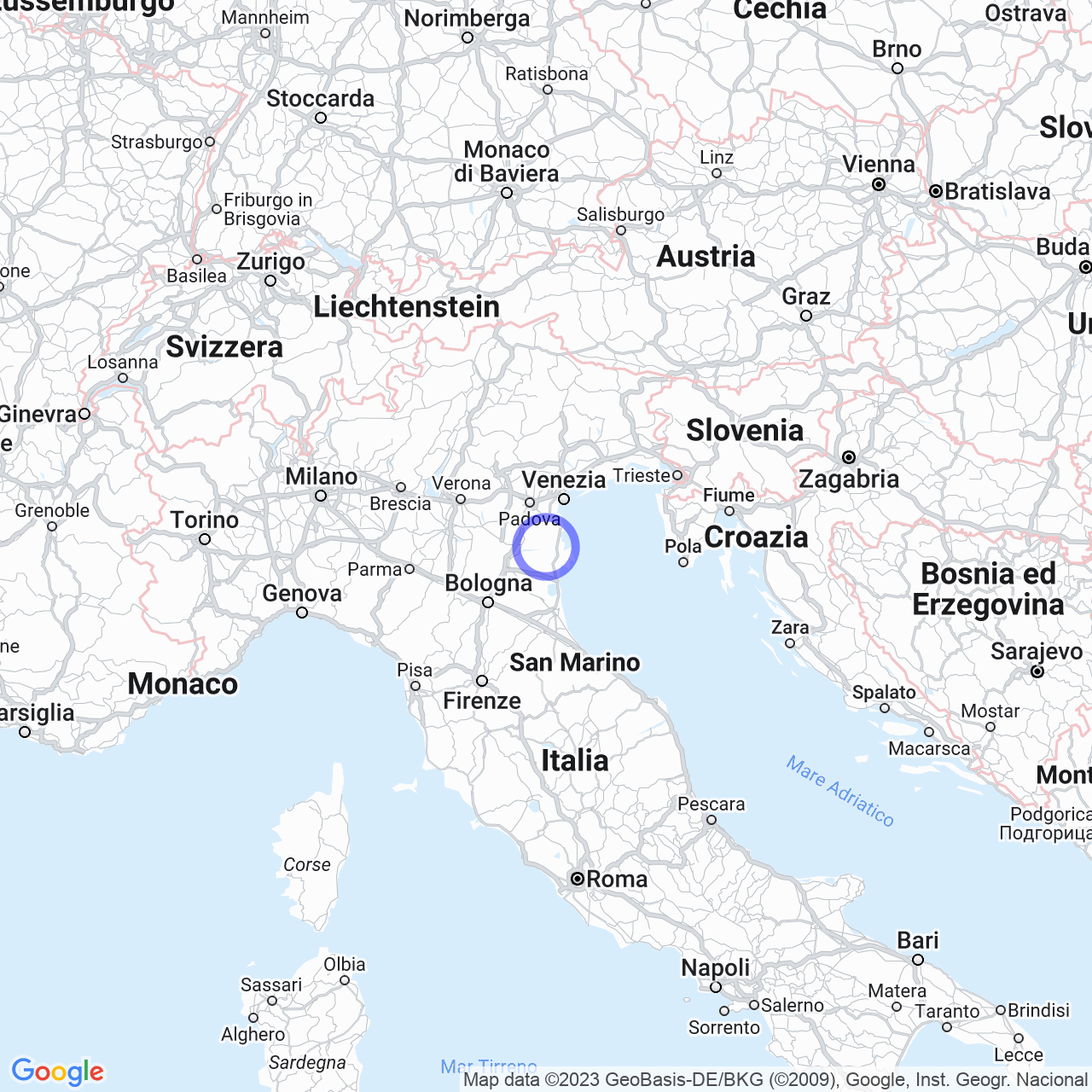Corbola
The Province of Rovigo: A Flat Area in Veneto
The Province of Rovigo is situated in the Veneto region and is a flat area located within the current Polesine geographic region. With a population of 227,773 inhabitants, it stretches longitudinally for about 100 km, from the borders with the provinces of Verona and Mantua to the Adriatic coast. It is located between the lower courses of the Adige and Po rivers, which respectively delimit its boundaries to the north from Badia Polesine to the mouth and to the south from Melara to the mouth (Po di Goro). In this summary, I will guide you through some important information on the physical geography, natural environment, culture and daily life in the Province of Rovigo.

Physical Geography
Territory
The provincial territory substantially coincides with the current Polesine, or is entirely included within it. The territory is entirely flat and covers an area of 1,789 square kilometers with an elevation ranging from -4 to 15 meters above sea level. The Province of Rovigo is a strip of land about 100 km long in an east-west direction and about 18 km wide in a north-south direction. The eastern part of the province corresponds to the Po Delta and continually expands eastward due to sediments deposited by the river at its mouths.
Hydrography
In addition to the Po and Adige, there are numerous waterways that cross the Province of Rovigo, including the Tartaro-Canalbianco-Po di Levante. This means that most of the fresh waters in Italy flow into the sea, either skirting or crossing the Province of Rovigo. The hydraulic problems that this has caused have resulted in numerous floods that have periodically impacted the territory. Throughout the territory, there are many artificial agricultural drainage canals in Italy, including the main ones, the Collettore Padano, Scolo Ceresolo and Scolo Valdentro.
Natural Environment
Despite the presence of many human activities, the Province of Rovigo still has pristine natural beauties. However, the province is subject to massive hydraulic reclamation activity that has led to the construction of levees and canals to protect surrounding areas from flooding by neighboring rivers. This has had an impact on the natural environment and local fauna.
Culture
The culture of the Province of Rovigo is linked to its history. The territory has been inhabited since prehistoric times, as evidenced by the numerous archaeological sites present in the area. Throughout history, the province has been ruled by various peoples, including the Romans, Visigoths, Goths and Hungarians. Since the Middle Ages, the Province of Rovigo has developed culturally and artistically. There are many churches and cathedrals present in the territory, including the Cathedral of San Giovanni Battista. The city of Rovigo is an important cultural center and hosts numerous artistic and cultural events throughout the year.
Daily Life
In general, daily life in the Province of Rovigo is quite peaceful and relaxed. The area is ideal for relaxation and enjoyment of nature, art, and good food. There are many local festivals and events held throughout the year where visitors can taste typical dishes of the local cuisine like pumpkin risotto and rice and peas (riso e bisi). Additionally, the Province of Rovigo is also famous for its prized wines such as Merlot, Cabernet Franc, and Tai Rosso.
In conclusion, the Province of Rovigo is a very interesting and fascinating area from a tourist and cultural standpoint. Rich in history, art, and traditions, it offers visitors the opportunity to discover a very special and authentic part of Veneto.
